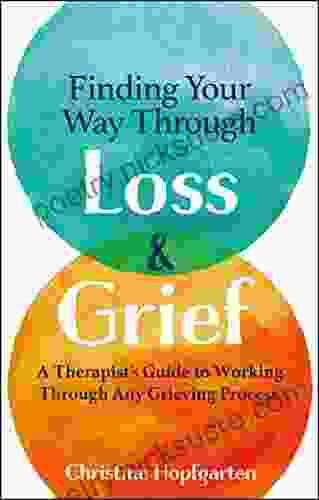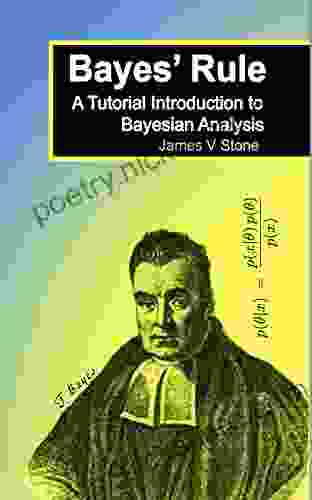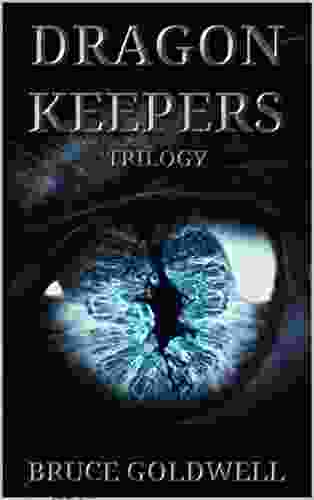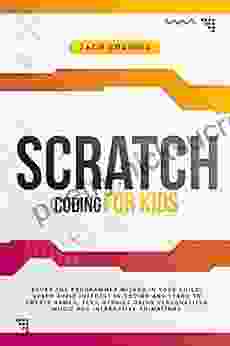Bayes' Rule Tutorial: A Comprehensive Guide to Bayesian Analysis

Bayes' rule is a fundamental theorem in probability theory that allows us to update our beliefs about the likelihood of events based on new evidence. It is a powerful tool that has applications in a wide variety of fields, including statistics, machine learning, and artificial intelligence. In this tutorial, we will provide a comprehensive to Bayes' rule, covering its concepts, applications, and real-world examples. By the end of this tutorial, you will have a solid understanding of Bayes' rule and how to use it to make better decisions.
4.4 out of 5
| Language | : | English |
| File size | : | 5455 KB |
| Screen Reader | : | Supported |
| Print length | : | 238 pages |
| Lending | : | Enabled |
Concepts of Bayes' Rule
Bayes' rule is a simple formula that can be used to calculate the probability of an event occurring given that another event has already occurred. The formula is as follows:
P(A|B) = (P(B|A) * P(A)) / P(B)
where:
- P(A|B) is the probability of event A occurring given that event B has already occurred.
- P(B|A) is the probability of event B occurring given that event A has already occurred.
- P(A) is the probability of event A occurring.
- P(B) is the probability of event B occurring.
The first step in using Bayes' rule is to identify the two events involved. The first event is the event that you are interested in predicting, and the second event is the evidence that you have observed. Once you have identified the two events, you need to calculate the probability of each event occurring. The probability of an event occurring can be estimated using historical data or from your own knowledge and experience.
Once you have calculated the probability of each event occurring, you can then use Bayes' rule to calculate the probability of the first event occurring given that the second event has already occurred. This probability is known as the posterior probability.
Applications of Bayes' Rule
Bayes' rule has a wide range of applications in a variety of fields. Some of the most common applications include:
- Medical diagnosis: Bayes' rule can be used to diagnose diseases based on symptoms. For example, a doctor may use Bayes' rule to calculate the probability of a patient having a particular disease given that they have certain symptoms.
- Spam filtering: Bayes' rule can be used to filter spam emails from legitimate emails. For example, an email filter may use Bayes' rule to calculate the probability of an email being spam given that it contains certain words or phrases.
- Machine learning: Bayes' rule is used in a variety of machine learning algorithms, such as Bayesian networks and support vector machines.
Real-World Examples
Here are some real-world examples of how Bayes' rule is used:
- Medical diagnosis: A doctor uses Bayes' rule to calculate the probability of a patient having a particular disease given that they have certain symptoms. In this example, the doctor is interested in predicting the probability of the patient having a disease (event A) given that they have a fever (event B). The doctor uses Bayes' rule to calculate the posterior probability of the patient having the disease, which is the probability of the patient having the disease given that they have a fever.
- Spam filtering: An email filter uses Bayes' rule to calculate the probability of an email being spam given that it contains certain words or phrases. In this example, the email filter is interested in predicting the probability of an email being spam (event A) given that it contains the word "free" (event B). The email filter uses Bayes' rule to calculate the posterior probability of the email being spam, which is the probability of the email being spam given that it contains the word "free".
- Machine learning: Bayes' rule is used in a variety of machine learning algorithms, such as Bayesian networks and support vector machines. In this example, a Bayesian network is used to classify images of animals. The Bayesian network uses Bayes' rule to calculate the probability of an image being a particular animal given the features of the image.
Bayes' rule is a powerful tool that can be used to make better decisions in a variety of situations. By understanding the concepts of Bayes' rule and how to use it, you can improve your decision-making skills and make better choices.
4.4 out of 5
| Language | : | English |
| File size | : | 5455 KB |
| Screen Reader | : | Supported |
| Print length | : | 238 pages |
| Lending | : | Enabled |
Do you want to contribute by writing guest posts on this blog?
Please contact us and send us a resume of previous articles that you have written.
 Fiction
Fiction Non Fiction
Non Fiction Romance
Romance Mystery
Mystery Thriller
Thriller SciFi
SciFi Fantasy
Fantasy Horror
Horror Biography
Biography Selfhelp
Selfhelp Business
Business History
History Classics
Classics Poetry
Poetry Childrens
Childrens Young Adult
Young Adult Educational
Educational Cooking
Cooking Travel
Travel Lifestyle
Lifestyle Spirituality
Spirituality Health
Health Fitness
Fitness Technology
Technology Science
Science Arts
Arts Crafts
Crafts DIY
DIY Gardening
Gardening Petcare
Petcare Jean Barbre
Jean Barbre Cade Courtley
Cade Courtley John Gignilliat
John Gignilliat James F Twyman
James F Twyman Steve Newell
Steve Newell Illustrated Edition Kindle Edition
Illustrated Edition Kindle Edition Michael F Nenes
Michael F Nenes Ken Robinson
Ken Robinson Sandy Bodeau
Sandy Bodeau Dave Hughes
Dave Hughes Christine Field
Christine Field Steven G Krantz
Steven G Krantz Todd Denault
Todd Denault L Chapman
L Chapman Timothy P Schultz
Timothy P Schultz Donna D Ignatavicius
Donna D Ignatavicius John O Sullivan
John O Sullivan Bella Forrest
Bella Forrest Steve Bennett
Steve Bennett Steven Yellin
Steven Yellin Lane Demas
Lane Demas Joyce Meyer
Joyce Meyer Tanmay Mehta
Tanmay Mehta Horace Kephart
Horace Kephart Monroe Wildrose
Monroe Wildrose Katharine Beals
Katharine Beals Ann Marie Brown
Ann Marie Brown Larry Thornberry
Larry Thornberry Ichigo Takano
Ichigo Takano Richard Appleton
Richard Appleton Susan G Solomon
Susan G Solomon Dan Koboldt
Dan Koboldt Paulo Guillobel
Paulo Guillobel Dante Fortson
Dante Fortson Stacey Williams
Stacey Williams Patrick Torsell
Patrick Torsell Melvin Fitting
Melvin Fitting Reinhard Kleist
Reinhard Kleist Margaret Paul
Margaret Paul Mark Matlock
Mark Matlock Oskar Morgenstern
Oskar Morgenstern Guy Windsor
Guy Windsor Robert A Cook
Robert A Cook Luke Schumacher
Luke Schumacher Julian Of Norwich
Julian Of Norwich Eleanor J Sullivan
Eleanor J Sullivan Scott Shupe
Scott Shupe Jay Allan
Jay Allan Vittal S Anantatmula
Vittal S Anantatmula Ray Moynihan
Ray Moynihan James C Scott
James C Scott Harold Davis
Harold Davis Stephen J Pyne
Stephen J Pyne Bernard Stiegler
Bernard Stiegler Shelley Emling
Shelley Emling Kathy Morey
Kathy Morey Sandy Camillo
Sandy Camillo Bert Mendelson
Bert Mendelson Miley Smiley
Miley Smiley Anna Della Subin
Anna Della Subin Barak A Bassman
Barak A Bassman Adil E Shamoo
Adil E Shamoo Chris Gore
Chris Gore G Norman Lippert
G Norman Lippert Ellen Painter Dollar
Ellen Painter Dollar Bob Madgic
Bob Madgic Rutger Bregman
Rutger Bregman Ray Eye
Ray Eye Earl Hipp
Earl Hipp Emmett W Hines
Emmett W Hines Christina Henry De Tessan
Christina Henry De Tessan Annalyn Ng
Annalyn Ng Ling Seto
Ling Seto Shannon Vallor
Shannon Vallor Worley Faver
Worley Faver J Scott Long
J Scott Long Kristina Cowan
Kristina Cowan William P Young
William P Young Horace Freeland Judson
Horace Freeland Judson Robin Esrock
Robin Esrock Antonio Robert
Antonio Robert Lily Siou
Lily Siou Mark Mckinney
Mark Mckinney Sparknotes
Sparknotes Dana James
Dana James Sheela Raja
Sheela Raja Gary Chapman
Gary Chapman Matthew Locricchio
Matthew Locricchio James P Sethna
James P Sethna Rick Sparkman
Rick Sparkman Kristian Berg
Kristian Berg The Pinnacle Review
The Pinnacle Review Barry Dainton
Barry Dainton Henry Dillon
Henry Dillon Anna Lowenhaupt Tsing
Anna Lowenhaupt Tsing Kalman Samuels
Kalman Samuels Jenna Evans Welch
Jenna Evans Welch Darryl Belfry
Darryl Belfry Annabel Streets
Annabel Streets Lily Dunn
Lily Dunn Randall Fitzgerald
Randall Fitzgerald Lexi Ryan
Lexi Ryan Freddy Silva
Freddy Silva Julie Creffield
Julie Creffield H Jerome Chapman
H Jerome Chapman Dave Canterbury
Dave Canterbury Jonathan R Brennan
Jonathan R Brennan Will Kurt
Will Kurt Richard C Schwartz
Richard C Schwartz Dave Whitlock
Dave Whitlock Jennifer Kostick
Jennifer Kostick Quinn Loftis
Quinn Loftis Gemma Bray
Gemma Bray Genevieve Mckay
Genevieve Mckay Joy Dawson
Joy Dawson Christine Hopfgarten
Christine Hopfgarten Elisabeth Haich
Elisabeth Haich Steven Munatones
Steven Munatones Jacob Ward
Jacob Ward Glen E Clarke
Glen E Clarke Dan Vogel
Dan Vogel Graham Robb
Graham Robb James Burke
James Burke Morton Manus
Morton Manus Nelson Dellis
Nelson Dellis Stephen Tarsitano
Stephen Tarsitano Anna Bright
Anna Bright Jacqueline Winslow
Jacqueline Winslow Marjorie Savage
Marjorie Savage Ann Mccallum Staats
Ann Mccallum Staats Emily J Taylor
Emily J Taylor Laurie Varga
Laurie Varga Scott Allan
Scott Allan Scott P Sells
Scott P Sells Crystal Cook
Crystal Cook Eddie Jones
Eddie Jones Claire Walter
Claire Walter Todd Radom
Todd Radom Tara Haelle
Tara Haelle Lina Beard
Lina Beard Zach Codings
Zach Codings Stephanie Cave
Stephanie Cave L J Martin
L J Martin Harley Mcallister
Harley Mcallister Sajni Patel
Sajni Patel Ian Moulding
Ian Moulding Hill Harper
Hill Harper Breeda Bermingham
Breeda Bermingham Lisa Randall
Lisa Randall Holly Chism
Holly Chism Chris Fregly
Chris Fregly Peter Hathaway Capstick
Peter Hathaway Capstick Nancy Marie White
Nancy Marie White Sally Connolly
Sally Connolly Helen E Lees
Helen E Lees Margaret Rogerson
Margaret Rogerson M Terese Verklan
M Terese Verklan Michael Witwer
Michael Witwer Dave Hall
Dave Hall R A Salvatore
R A Salvatore Tyler Richards
Tyler Richards David Berry
David Berry Charlene Beswick
Charlene Beswick Danny Jones
Danny Jones George Lakoff
George Lakoff Ariel Dalfen
Ariel Dalfen Paul Mendelson
Paul Mendelson Tali Sharot
Tali Sharot Bob Labbe
Bob Labbe Richard Mcafee
Richard Mcafee Tarani Chandola
Tarani Chandola Katie Krimer Ma Lcsw
Katie Krimer Ma Lcsw Cathy Glass
Cathy Glass Valerie Hansen
Valerie Hansen Gill James
Gill James Chris Bailey
Chris Bailey Richard A Ruth
Richard A Ruth Jennifer Dugan
Jennifer Dugan Sara Wickham
Sara Wickham Julie C Meloni
Julie C Meloni Barry Schwartz
Barry Schwartz Matthew Cobb
Matthew Cobb Robert A Conover
Robert A Conover Douglas Perry
Douglas Perry Julian Havil
Julian Havil Vladimir Vasiliev
Vladimir Vasiliev Ruby Mcconnell
Ruby Mcconnell Victor Stringer
Victor Stringer Prime Hall
Prime Hall Jay Spence
Jay Spence Marie Cirano
Marie Cirano Zena Hitz
Zena Hitz Mishka Shubaly
Mishka Shubaly W W Sawyer
W W Sawyer Seth Stephens Davidowitz
Seth Stephens Davidowitz Zach Davis
Zach Davis Naomi Tomky
Naomi Tomky Helge Kragh
Helge Kragh Carl Mckeating
Carl Mckeating Steve Schwartz
Steve Schwartz Suzanne Clark
Suzanne Clark Sally Annjanece Stevens
Sally Annjanece Stevens Alex Bromley
Alex Bromley Kate Mcvaugh
Kate Mcvaugh Mary E Pearson
Mary E Pearson Craig Ramsay
Craig Ramsay James C Zimring
James C Zimring Darcie Little Badger
Darcie Little Badger Sara Dyer
Sara Dyer Julie Plagens
Julie Plagens Jemar Tisby
Jemar Tisby Sean Bartram
Sean Bartram Anna Grafl
Anna Grafl Barbara Sealock
Barbara Sealock Melissa Mortenson
Melissa Mortenson Arcturus Publishing
Arcturus Publishing Robert F Boszhardt
Robert F Boszhardt Gloria Chadwick
Gloria Chadwick Kristen L Mauk
Kristen L Mauk Peter Watson
Peter Watson Johnny Chuong
Johnny Chuong Jonathan Pd Buckley
Jonathan Pd Buckley Daphne Poltz
Daphne Poltz Barb Musick
Barb Musick Neal Shusterman
Neal Shusterman Becky Wade
Becky Wade Bethany Saltman
Bethany Saltman Bren Smith
Bren Smith Mike Reilly
Mike Reilly Wayne C Booth
Wayne C Booth Gilbert J Grant Md
Gilbert J Grant Md Bruce Lockwood
Bruce Lockwood Lisa Manterfield
Lisa Manterfield Cb Droege
Cb Droege H M Schey
H M Schey Ellen Dugan
Ellen Dugan Ben Shneiderman
Ben Shneiderman Brian Daccord
Brian Daccord Mike Roberts
Mike Roberts Creative Guy
Creative Guy Kyung Won Chung
Kyung Won Chung Roy M Wallack
Roy M Wallack David Soucie
David Soucie Susan Spicer
Susan Spicer Stan Gibilisco
Stan Gibilisco Michael Labossiere
Michael Labossiere Linda Lewis Alexander
Linda Lewis Alexander Asker Jeukendrup
Asker Jeukendrup Ann Voskamp
Ann Voskamp Clive Scarff
Clive Scarff Stacey A Shannon
Stacey A Shannon Walter Mischel
Walter Mischel Louis Van Dyke
Louis Van Dyke Harnarayan Singh
Harnarayan Singh College Hippo
College Hippo Julia Galef
Julia Galef Noel D Justice
Noel D Justice R K Agarwal
R K Agarwal Dean Buonomano
Dean Buonomano Dr Sarita Uhr
Dr Sarita Uhr Martin N Seif
Martin N Seif Bob Cary
Bob Cary Illysa R Foster
Illysa R Foster Trevor Hartman
Trevor Hartman Winton Porter
Winton Porter Ford R Bryan
Ford R Bryan Daniel Isberner
Daniel Isberner Peter L Falkingham
Peter L Falkingham John Dickson
John Dickson Rebecca A Moyes
Rebecca A Moyes Thomas A Garrity
Thomas A Garrity Larry Semento
Larry Semento Anna B Doe
Anna B Doe Steve Olson
Steve Olson Steve Bowkett
Steve Bowkett Sally Black
Sally Black Anna Ivey
Anna Ivey E R Truitt
E R Truitt P M Gilbert
P M Gilbert Zoe Moore
Zoe Moore John Dunn
John Dunn Jackson Carter
Jackson Carter Krista Marson
Krista Marson Louise Katz
Louise Katz Frank Thomas
Frank Thomas Hannah Testa
Hannah Testa Kennedy Achille
Kennedy Achille Sharman Apt Russell
Sharman Apt Russell Timothy Ellis
Timothy Ellis Curtis Collins
Curtis Collins Chase Hassen
Chase Hassen Livia Bitton Jackson
Livia Bitton Jackson Jeff Kuehl
Jeff Kuehl Dan Gardner
Dan Gardner Helen Adrienne
Helen Adrienne Joshua Shifrin
Joshua Shifrin C J Brown
C J Brown William Goldman
William Goldman Anna Watson
Anna Watson Peter Richmond
Peter Richmond Damian Hall
Damian Hall Stefanie Japel
Stefanie Japel Randy J Paterson
Randy J Paterson Janine Marsh
Janine Marsh Matthew Rudy
Matthew Rudy Paul Logothetis
Paul Logothetis Martin Meredith
Martin Meredith George James Grinnell
George James Grinnell Chronicle Books
Chronicle Books Zach Hunter
Zach Hunter Anna Flores Locke
Anna Flores Locke Stuart Tomlinson
Stuart Tomlinson Paul Bloom
Paul Bloom Robby Weber
Robby Weber Karen Bassie Sweet
Karen Bassie Sweet Ann Zaprazny
Ann Zaprazny Michael Hodgson
Michael Hodgson Philip Reed
Philip Reed Sarah Stodola
Sarah Stodola Sean Purchase
Sean Purchase Heidi Kreider
Heidi Kreider John Baichtal
John Baichtal Lizzie Collingham
Lizzie Collingham Sam Demas
Sam Demas John Murray
John Murray Angela Saini
Angela Saini Geoff Greig
Geoff Greig Kass Morgan
Kass Morgan Susan Straub
Susan Straub Boye Lafayette De Mente
Boye Lafayette De Mente Chic Scott
Chic Scott Dorothy Ours
Dorothy Ours Malcolm S Thaler
Malcolm S Thaler L A Cotton
L A Cotton Steve Grant
Steve Grant Ralph Waldo Emerson
Ralph Waldo Emerson Anna Quindlen
Anna Quindlen Christelle Dabos
Christelle Dabos John Edwards
John Edwards Josephine Mccarthy
Josephine Mccarthy Good Books
Good Books Robert Gerver
Robert Gerver Ralph Cockburn
Ralph Cockburn Hope Comerford
Hope Comerford Tim Young
Tim Young John Pullen
John Pullen Anna Crowley Redding
Anna Crowley Redding Joanna Wells
Joanna Wells Steven A Fino
Steven A Fino John Yates
John Yates Wendy Leo Smith
Wendy Leo Smith Fumio Sasaki
Fumio Sasaki Peter Wacht
Peter Wacht Rebecca Carroll
Rebecca Carroll Mordecai Orimiladeye
Mordecai Orimiladeye J E Esslemont
J E Esslemont Michael Burnett
Michael Burnett Sean Covey
Sean Covey Peyton Curley
Peyton Curley Pradeepa Narayanaswamy
Pradeepa Narayanaswamy Anna Wood
Anna Wood Melanie Dickerson
Melanie Dickerson Philip Gibson
Philip Gibson Christopher Seddon
Christopher Seddon Junior Health Institute
Junior Health Institute Steve Oldenburg
Steve Oldenburg Sukhveer Singh
Sukhveer Singh Ann Valett
Ann Valett Dannah Gresh
Dannah Gresh Patricia Ladis
Patricia Ladis Maya Van Wagenen
Maya Van Wagenen Sharon Rowley
Sharon Rowley Kendall Coyne
Kendall Coyne David Woods
David Woods Les Livingstone
Les Livingstone Julie A Ross
Julie A Ross Susan M Schneider
Susan M Schneider Michael Tan
Michael Tan Nicholas Thomas
Nicholas Thomas Howard Means
Howard Means Roy R Grinker
Roy R Grinker Joey Myers
Joey Myers Patricia Romanowski Bashe
Patricia Romanowski Bashe Anne Sylvie Malbrancke
Anne Sylvie Malbrancke Jill Lepore
Jill Lepore Annette Burns
Annette Burns Adele Faber
Adele Faber Gwen Mckee
Gwen Mckee Jessa Stone
Jessa Stone Charles Dickens
Charles Dickens Fox Fisher
Fox Fisher Steven Callahan
Steven Callahan Skeleton Steve
Skeleton Steve Nicholas Clapp
Nicholas Clapp Suzanne Girard Eberle
Suzanne Girard Eberle Tim Cahill
Tim Cahill Jennifer L Lopez
Jennifer L Lopez Richard A Swanson
Richard A Swanson Michael G Manning
Michael G Manning Jason
Jason Marva Boatman
Marva Boatman Neel Doshi
Neel Doshi Jack Perconte
Jack Perconte Maggie Downs
Maggie Downs Mikael Lindnord
Mikael Lindnord Pawel Malczewski
Pawel Malczewski Geryn Childress
Geryn Childress Holly Bourne
Holly Bourne Jay Young
Jay Young John Van Wyhe
John Van Wyhe Charles J Sanders
Charles J Sanders Aaron Mahnke
Aaron Mahnke Frances Schultz
Frances Schultz L J Smith
L J Smith Tony Osgood
Tony Osgood Eric Greitens
Eric Greitens Roger Hall
Roger Hall June Hur
June Hur Elizabeth Wissner Gross
Elizabeth Wissner Gross Justine Gregory Williams
Justine Gregory Williams Sherry B Ortner
Sherry B Ortner Omari Bouknight
Omari Bouknight Finn Aagaard
Finn Aagaard Shawn Shallow
Shawn Shallow Caroline Miller
Caroline Miller Rick Page
Rick Page Nisha Garg
Nisha Garg Suzanne I Barchers
Suzanne I Barchers Judy Corry
Judy Corry Joe Hyams
Joe Hyams Pierluigi Barrotta
Pierluigi Barrotta Buddy Lee
Buddy Lee Alexander L Chapman
Alexander L Chapman Jenn Bennett
Jenn Bennett M Shawn Copeland
M Shawn Copeland Silvia M Lindtner
Silvia M Lindtner Jonathan Franklin
Jonathan Franklin Jenny Jacobs
Jenny Jacobs Margaret Jean Langstaff
Margaret Jean Langstaff Lori L Tharps
Lori L Tharps Isaac Fitzsimons
Isaac Fitzsimons Jackie Bolen
Jackie Bolen Caryl Phillips
Caryl Phillips Christopher T Coughlin
Christopher T Coughlin Stefan Hollos
Stefan Hollos Linda K Miller
Linda K Miller C W Farnsworth
C W Farnsworth Dr Harper
Dr Harper Annaka Harris
Annaka Harris Hanumant Deshmukh
Hanumant Deshmukh
Light bulbAdvertise smarter! Our strategic ad space ensures maximum exposure. Reserve your spot today!

 Dwayne MitchellNurturing Children of Character: A Holistic Approach to Building Moral Values
Dwayne MitchellNurturing Children of Character: A Holistic Approach to Building Moral Values Bobby HowardFollow ·11.9k
Bobby HowardFollow ·11.9k Chinua AchebeFollow ·9.5k
Chinua AchebeFollow ·9.5k Leon FosterFollow ·5.8k
Leon FosterFollow ·5.8k Douglas FosterFollow ·15.6k
Douglas FosterFollow ·15.6k Matt ReedFollow ·2.2k
Matt ReedFollow ·2.2k Jamie BlairFollow ·17.3k
Jamie BlairFollow ·17.3k Timothy WardFollow ·4.6k
Timothy WardFollow ·4.6k Blake KennedyFollow ·16.6k
Blake KennedyFollow ·16.6k

 Aldous Huxley
Aldous HuxleyMorgenstern: A Classic Tale of True Love and High...
Morgenstern is a...

 Beau Carter
Beau CarterThe Oasis Guide to Asperger Syndrome
What is Asperger Syndrome? Asperger...

 Chadwick Powell
Chadwick PowellFinding Your Way Through Loss Grief: A Therapist S Guide...
Grief is a natural human emotion that we...
4.4 out of 5
| Language | : | English |
| File size | : | 5455 KB |
| Screen Reader | : | Supported |
| Print length | : | 238 pages |
| Lending | : | Enabled |
















